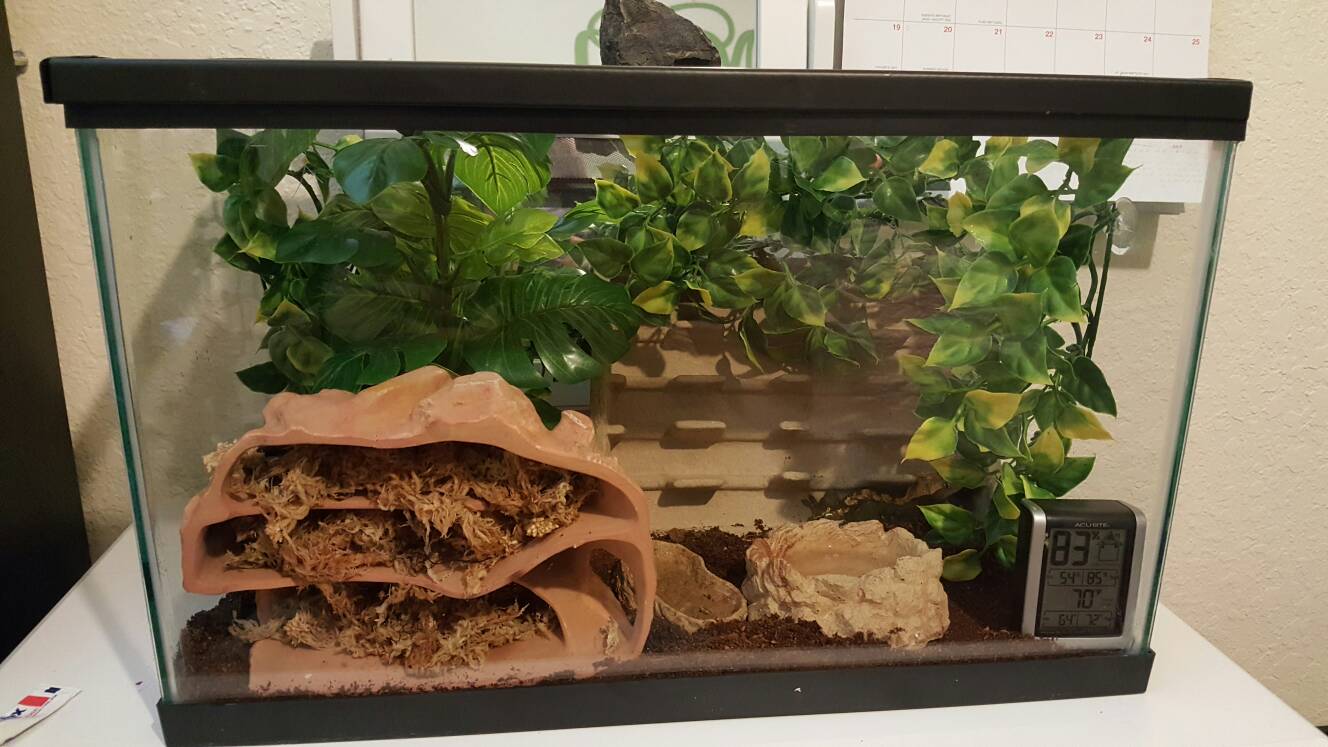

This will help avoid making your crested gecko feel vulnerable and exposed. To stop your crested gecko from going behind the background, place a cloth or something similar and push it inside the gaps that are on the bottom of the cage.Īnd if you decide to remove the background, then make sure to include lots of foliage and at least 1 hide for your crested gecko. If your crested gecko has started hiding behind the background, you can either block your gecko from going there or remove the background. The owner then start thinking whether the crested gecko is fine hiding there, or is simply stuck. For example, the common problem is when a crested gecko starts hiding behind the terrarium background and doesn’t come out for long periods of time. Reason #3: Your crested gecko is stuckīelieve it or not, your crested gecko can get stuck in the terrarium structures. So consider having another feeder ledge in the back of the terrarium, around the foliage, where no one can see your crested gecko! And place this extra food cup or bowl on the ground, as well. Some crested geckos are even shy to eat in front of others.
CRESTED GECKO HIDES TV
So it’s not a good idea to place a crested gecko’s tank in the living room where everyone makes lots of noise, with TV and other electronics. Other pets or loud noises can also scare your crested gecko. Also, make sure not to house a crested gecko smaller than 20 grams in a 15-30 gallon tank. Try replicating the previous terrarium and making any changes gradually. Your crested gecko can also become stressed if you make any big changes in the terrarium or if you change the terrarium to a new one. If your new crested gecko hasn’t eaten for a week already, start putting some CGD on its snout and let lick it.

Make sure to include lots of foliage (60-65% of the tank) and 1-2 hides so your crested gecko can feel safe. You can even place cardboard or curtains that will cover the sides of the tank. Mist the cage and the gecko 1-2 times a day so it can lick the water droplets. At this stage, don’t handle your crested gecko and don’t force it to eat or come out of its hide! This will only worsen the situation. It can take around a week, but even up to 2-3 weeks before a crested gecko acclimates to new surroundings.ĭuring this time, a crested gecko won’t eat much or at all, and as a result – won’t poop regularly. If you have just brought a new crested gecko home, then it will be stressed. Stress is one of the major reasons why a crested gecko won’t come out of its hide. Reason #2: Your crested gecko is mildly or severely stressed Make sure to weigh your crested gecko regularly using digital jewelry or kitchen scales like this. Not eating for a week or even longer is fine for new crested geckos when they are acclimating, though. However, if your crested gecko has lost weight, is not eating or pooping properly, then it could be sick. If they live in a group, you might notice them sleeping together. Most crested geckos don’t come out at all until you turn off the lights.Ĭrested gecko also tend to sleep in strange positions and crammed in tight spots in the terrarium! Some enjoy sleeping under paper towels, some on trees and more. So, if your crested gecko is hiding and sleeping most of the day, it is normal. Crested geckos often get out when you are sleeping, and some are even shy to get out when you approach the tank. It is normal for crested geckos to choose one or two favorite hiding spots, and spend there most of the day. Most new crested gecko owners stress a lot about their crested gecko hiding a lot.


 0 kommentar(er)
0 kommentar(er)
